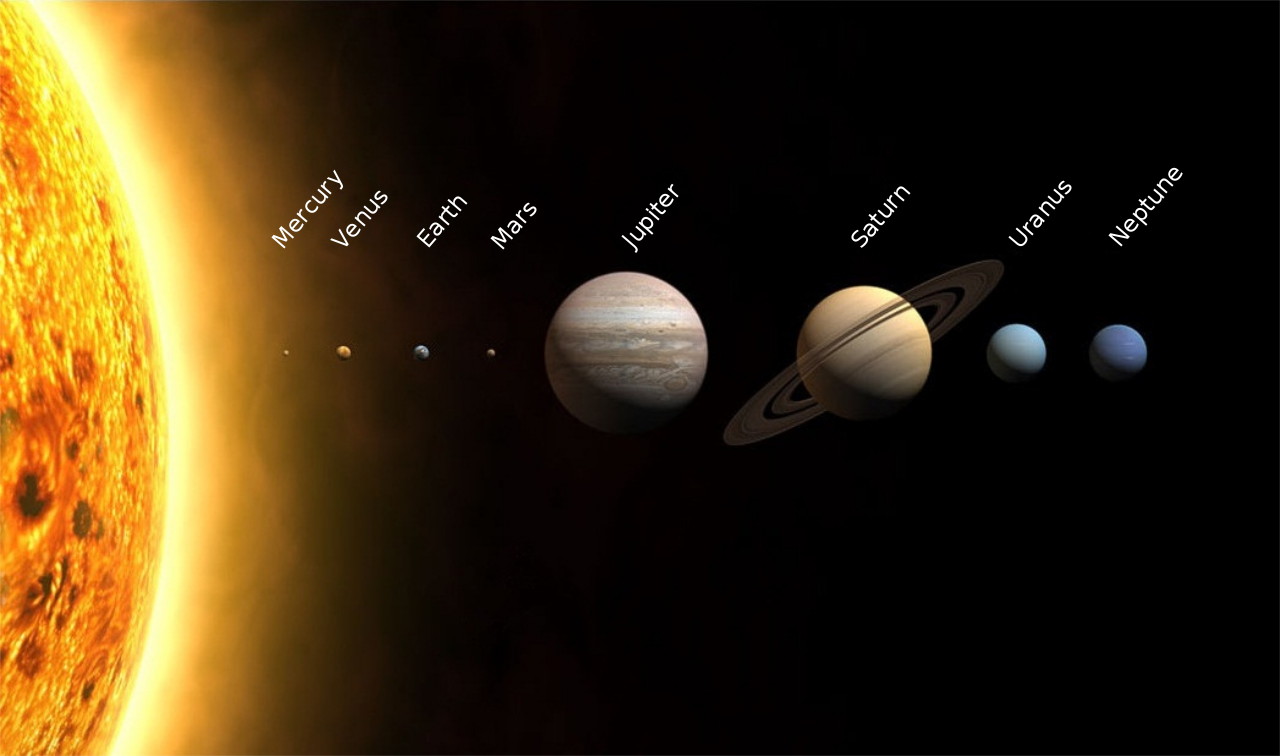

Solar System Review:
Our solar system consists of a star (average in size and luminosity) we call the Sun, the planets (in order of their distance from the Sun) Mercury, Venus, Earth, Mars, Jupiter, Saturn, Uranus, Neptune, and Kuiper Belt objects (e.g., dwarf planets like Pluto), the satellites or moons of the planets, numerous comets, asteroids, meteoroids and the interplanetary medium.
The planets, and most of the satellites of the planets, and the asteroids revolve around the Sun in the same direction (counterclockwise), in nearly circular orbits (ellipses, but close to circles). When looking down from above the Sun's north pole, the planets orbit in a counter-clockwise direction. A new class of dwarf planets was added in 2006, these objects are found mostly in the Asteroid and Kuiper Belts.
The planets orbit the Sun in or near the same plane, called the ecliptic. Pluto is a special dwarf planet in that its orbit is the most highly inclined (18 degrees) and the most highly elliptical of all the planets.
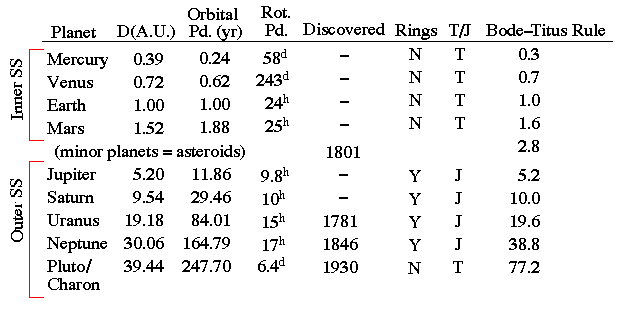
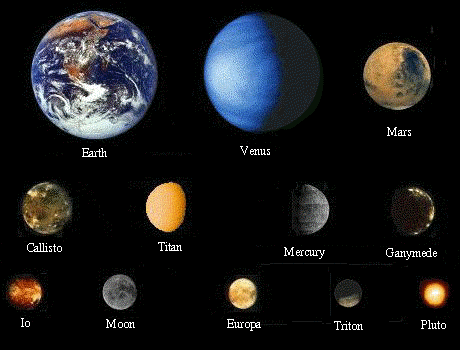
Terrestrial Worlds:
The four primary terrestrial worlds are the innermost planets in the solar system, Mercury, Venus, Earth and Mars. There are an additional 8 other terrestrial worlds; the Moon, Io, Europa, Ganymede, Callisto (the four Galilean moons), Titan (a moon of Saturn), Triton (a moon of Neptune) and Pluto.
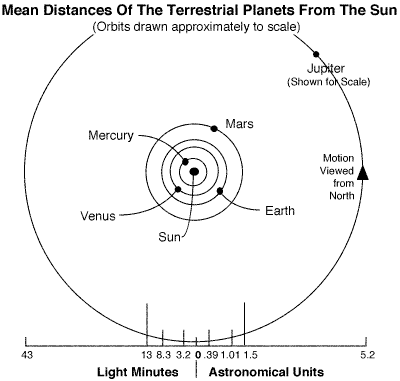
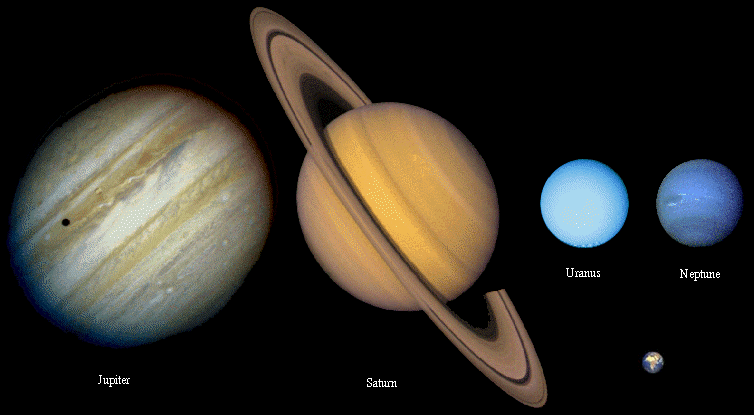
Jovian Worlds:
Jupiter, Saturn, Uranus, and Neptune are known as the Jovian (Jupiter-like) planets, because they are all similar in size and structure, i.e. gigantic compared with Earth (Earth is in the lower right corner above) and having a non-solid, gaseous nature.
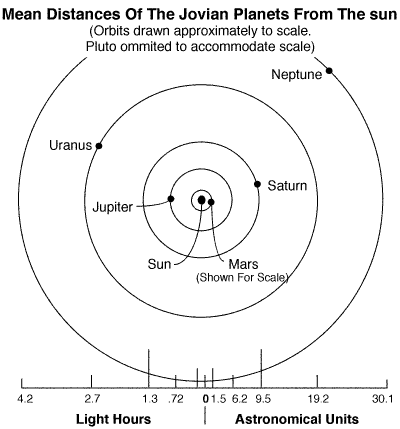
Planet vs. Moon:
A planet revolves around the Sun. A moon or satellite revolves around a planet. The term planet or moon is not selected by mass or size of the body (for example, Titan, a moon of Saturn, is bigger than Mercury).
The period of revolution of a planet is determined by timing and astrometry (the science of measuring stellar and planetary positions). Periods of rotation are determined by either
Information about the planets is obtained by:
Solar System Formation:
Any model of Solar System formation must explain the following facts:
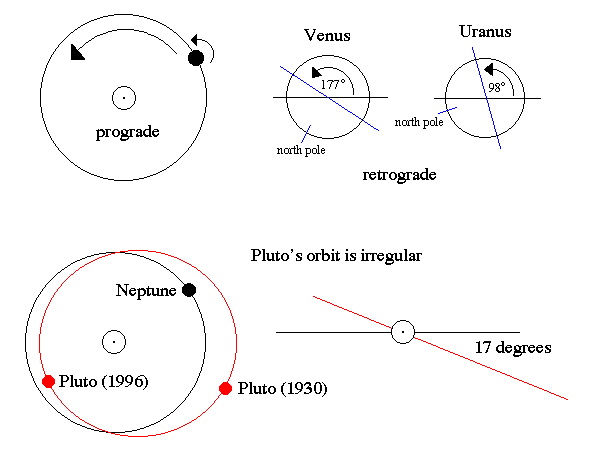
T=rocky and small <-> J=gaseous and large
Any theory of Solar System formation must explain the following properties and why there is a separation of the planets into two types
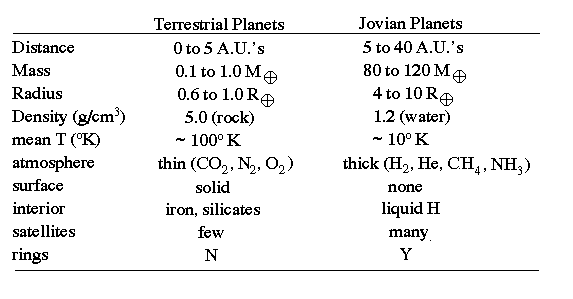
Common Elements/Compounds in the Solar System:
The most common elements on each planet tell us something about its formation process and later evolution. For example, small planets have gravitational fields that are too weak to maintain light elements such as H and He. Jovian worlds are cold and have many compounds as ice rather than gas or liquids.
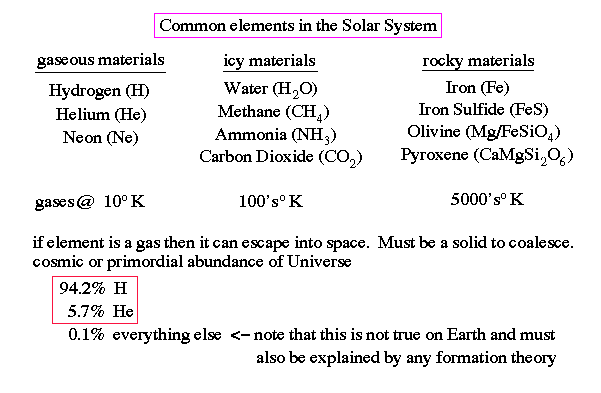

|
|

|